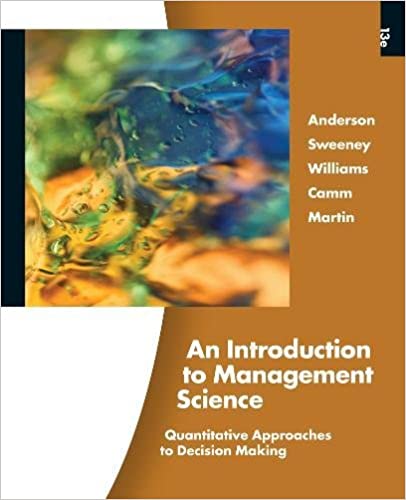
An Introduction to Management Science 13th Edition by David Anderson,Dennis Sweeney ,Thomas Williams ,Jeffrey Camm, Kipp Martin
Edition 13ISBN: 978-1439043271
An Introduction to Management Science 13th Edition by David Anderson,Dennis Sweeney ,Thomas Williams ,Jeffrey Camm, Kipp Martin
Edition 13ISBN: 978-1439043271 Exercise 14
Data for the progression of college students at a particular college are summarized in the following matrix of transition probabilities: 
a. What states are absorbing states?
b. Interpret the transition probabilities for a sophomore.
c. Compute the probabilities that a sophomore will graduate and that a sophomore will drop out.
d. In an address to the incoming class of 600 freshmen, the dean asks the students to look around the auditorium and realize that about 50% of the freshmen present today will not make it to graduation day. Does your Markov process analysis support the dean's statement? Explain.
e. Currently, the college has 600 freshmen, 520 sophomores, 460 juniors, and 420 seniors. What percentage of the 2000 students attending the college will eventually graduate?

a. What states are absorbing states?
b. Interpret the transition probabilities for a sophomore.
c. Compute the probabilities that a sophomore will graduate and that a sophomore will drop out.
d. In an address to the incoming class of 600 freshmen, the dean asks the students to look around the auditorium and realize that about 50% of the freshmen present today will not make it to graduation day. Does your Markov process analysis support the dean's statement? Explain.
e. Currently, the college has 600 freshmen, 520 sophomores, 460 juniors, and 420 seniors. What percentage of the 2000 students attending the college will eventually graduate?
Explanation
Markov Process:
Markov process models a...
An Introduction to Management Science 13th Edition by David Anderson,Dennis Sweeney ,Thomas Williams ,Jeffrey Camm, Kipp Martin
Why don’t you like this exercise?
Other Minimum 8 character and maximum 255 character
Character 255


